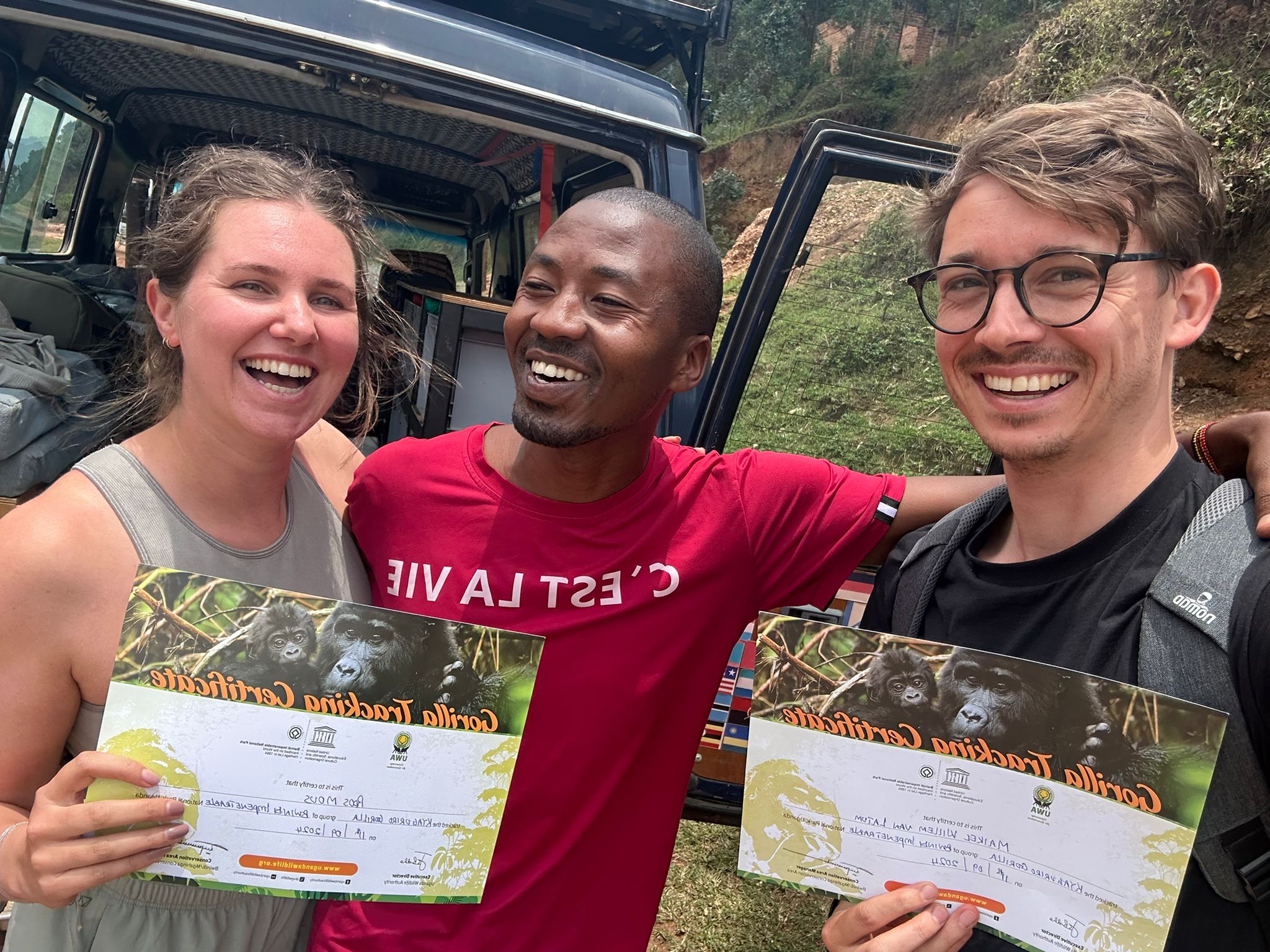What To Pack on a Gorilla Tracking Safari: The Ultimate Guide

What To Pack on a Gorilla Tracking Safari: The Ultimate Guide. Embarking on a gorilla-tracking safari is one of Earth’s most thrilling wildlife experiences. Hiking through misty rainforests, climbing steep trails, and finally coming face-to-face with a majestic mountain gorilla is humbling and unforgettable. But this adventure takes you deep into rugged, remote terrain, and being well-prepared can make the difference between a comfortable, enjoyable trek and an exhausting struggle.
what to pack for a gorilla tracking safari, covering everything from clothing and gear to essential documents and optional extras.
1. Essential Clothing for Gorilla Trekking
Tracking gorillas involves hiking through thick vegetation, muddy trails, and unpredictable weather. The right clothing will protect you from the elements—and from the jungle itself.
Long-Sleeved Shirt and Long Pants
Wearing long sleeves and pants helps protect your arms and legs from insect bites, thorny plants, and stinging nettles. Opt for quick-dry, breathable fabric in neutral or earthy tones to blend into the environment.
Waterproof Jacket or Poncho
Even during the dry season, rain showers are common in tropical forests. A lightweight, packable rain jacket is a must.
Sturdy Hiking Boots
Your footwear is arguably the most important item. Choose comfortable, waterproof hiking boots with a strong grip. The trails can be steep, muddy, and slippery.
Gaiters (Optional but Useful)
Gaiters protect your ankles and lower legs from mud, water, and insects, especially in wet conditions.
Gardening Gloves or Trekking Gloves
These help when pushing through dense foliage or grabbing onto branches for support. Gloves also protect your hands from nettles.
2. Essential Gear
Being prepared with the right gear can significantly enhance your gorilla trekking experience.
Daypack
A small, waterproof daypack is ideal for carrying your essentials—water, snacks, a camera, and rain gear. Look for one with padded shoulder straps for comfort.
Reusable Water Bottle or Hydration Pack
You’ll need to stay hydrated during the hike. Pack at least 2 liters of water, especially if you’re trekking in warm conditions.
Energy Snacks
Bring energy bars, nuts, dried fruit, or trail mix to keep your energy levels up during the trek.
Walking Stick
Guides often provide wooden walking sticks, but you can also bring a collapsible trekking pole. It’s especially helpful for balance on uneven terrain.
Camera or Smartphone
Capture the moment—but remember, no flash photography is allowed around the gorillas. Pack extra batteries or a power bank just in case.
3. Health and Safety Items
Jungle trekking involves health risks, so pack smart to stay safe and comfortable.
Insect Repellent
Mosquitoes and other insects are common in tropical regions. Choose a DEET-based repellent or a natural alternative that is effective against bugs.
Sunscreen and Lip Balm
Even in the forest, the sun can be intense—especially at higher altitudes. Bring SPF protection for your skin and lips.
Basic First Aid Kit
Include plasters, antiseptic wipes, painkillers, antihistamines, blister pads, and personal medications.
Antibacterial Hand Gel
Useful before eating or after using nature’s “bathroom.” Also helpful for overall hygiene in the wild.
4. Important Documents
Gorilla Trekking Permit
This is essential. You won’t be allowed to trek without a valid permit. Keep both a printed and digital copy with you.
Passport and Travel Insurance
Always carry your passport, and make sure your travel insurance covers high-altitude hiking and adventure travel.
Yellow Fever Card
Some countries require proof of yellow fever vaccination for entry, especially if you’re coming from or transiting through endemic areas.
5. Optional but Recommended Items
These items aren’t essential, but they can improve your overall experience.
Binoculars
For birdwatching or spotting other wildlife before or after your gorilla trek.
Lightweight Towel or Wipes
After a long, sweaty trek, a small towel or wet wipes can help you freshen up before going back to your lodge.
Dry Bag
Use it to keep electronics or documents safe and dry in case of rain.
Travel Journal or Notebook
Many travelers find gorilla tracking to be a deeply emotional experience. Recording your thoughts while it’s still fresh can help preserve the memory.
6. What NOT to Bring
Plastic Bags: Many national parks and countries like Rwanda have strict plastic bans.
Bright-colored clothing: Neutral colors are less disturbing to wildlife and help you blend into the forest environment.
Loud items or noise-making devices: Silence is key to a peaceful encounter with the gorillas.
Final Packing Tips
Pack light but smart: You’ll carry your gear for hours, so prioritize essentials.
Layer your clothing: Mornings can be chilly, but they warm up quickly as you hike.
Leave valuables behind: You won’t need luxury items deep in the forest.
A gorilla tracking safari is a once-in-a-lifetime adventure that rewards preparation.
Now that you know what to pack, you’re one step closer to meeting the gentle giants of Africa’s mountains. So get ready, gear up, and prepare for an experience that will leave you in awe.

Request for a Quote
Start planning your adventure trip today with a professional expert available to help you 24/7. Encounter Africa on your own terms.
Inquire Now
Visa Entry
Uganda offers online visa applications, but many travelers find it easier to pay (US$100) and obtain a visa upon arrival at points like Entebbe International Airport. For travel into Rwanda and Kenya, it's recommended to apply for an East African Visa.
Read More About Visas


